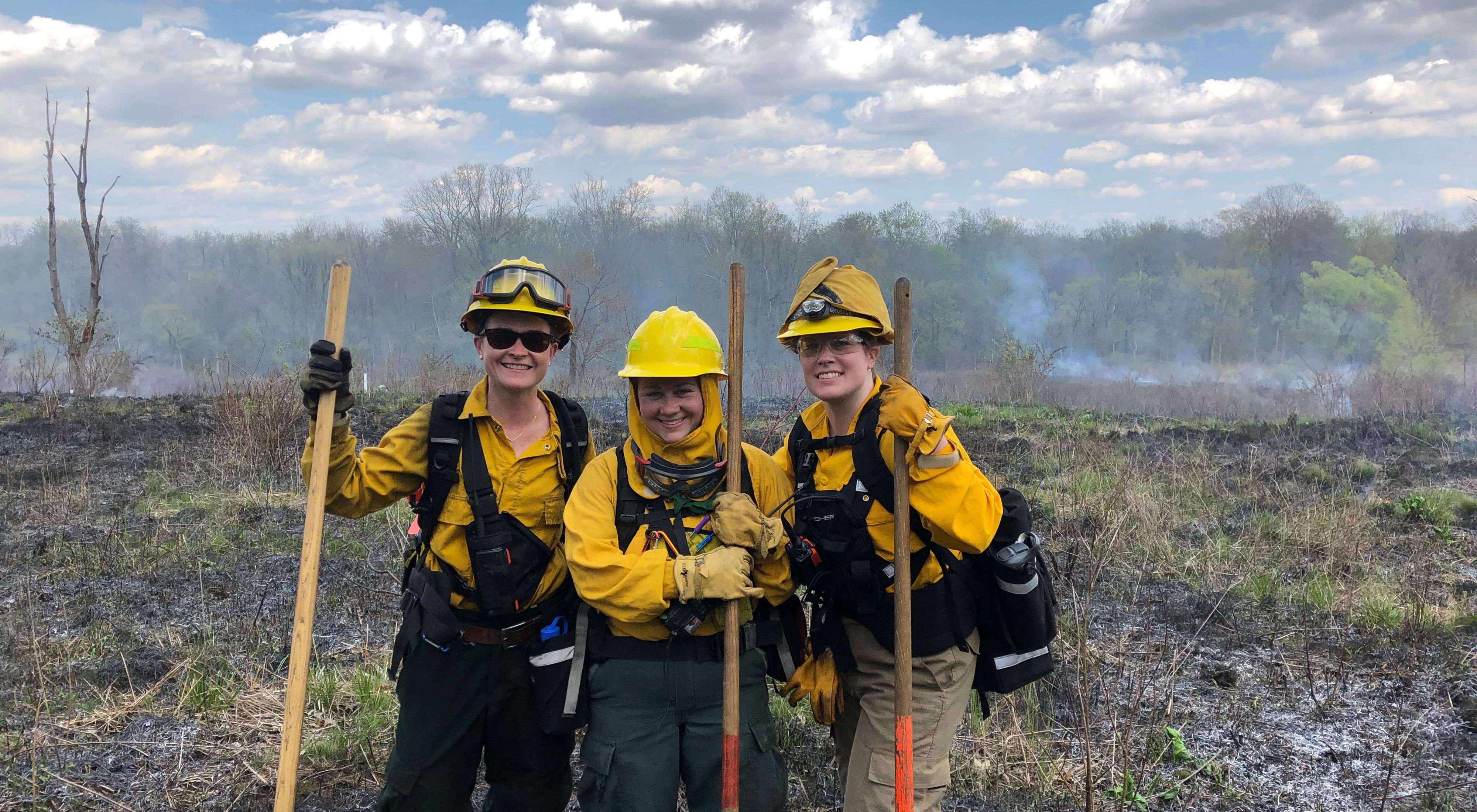Women on the Fireline
A burn crew composed primarily of women recently conducted a controlled burn at Ives Road Fen Preserve.
Rebecca Hagerman made sure she ate a really good breakfast, packed all of her water and poured coffee into her trusty thermos for the two-hour drive to the site. It was an overcast day and she knew that bad weather predicted for later in the day could change plans quickly. She had prepared for months, taking her pack test and preparing her gear the night before.
While Hagerman normally sits behind a desk in Lansing for her work as a conservation coordinator for The Nature Conservancy’s Michigan program, today her work took her to the Ives Road Fen Preserve near Tecumseh as part of a prescribed burn crew comprised primarily of women.
“I was feeling a little nervous and anxious because I hadn’t burned in several years so this felt like a first burn all over again, but I knew the preserve well, so that helped because that I knew where we were going to be and what the terrain would be like,” she says.
Quote: Kim Steinberger
After a while, you become more comfortable and confident about being around fire.
Like Hagerman, Kim Steinberger prepared for months ahead of the actual burn by exercising and passing a pack test, but also on the days prior to the burn with packing and mental preparation. The excitement of a day burning in the field mixed with the pride of contributing to the return of a natural solution to a disturbed, fragile and rare habitat.
“Some people ask me ‘Aren’t you scared or nervous when working on the fireline?’” says Kim Steinberger. “And my usual response is yes. But after a while, you become more comfortable and confident about being around fire.”
Steinberger says many of her family have told her they are proud of her work and are excited to hear her explain about the importance of why TNC conducts burns and what an important land management tool fire is to biodiversity.
Fire has always been a part of the ecosystem in Michigan, especially at places like Ives Road Fen Preserve where rare prairie fen habitat supports species like the Massasauga rattlesnake, which burrows underground during fires. In fact, many plants and animals depend on the recycled nutrients and healthy ecosystems that natural wildfires produce.
In a suburban area like Tecumseh, wildfires pose dangers to surrounding neighborhoods. In contrast, a controlled burn with a prescribed fire plan implemented by trained professionals like Steinberger and Hagerman can help nature thrive at a place like Ives.
“I’m always really glad to see more women out in the field participating in stewardship or restoration work,” Steinberger says. “This is a male dominated field and it’s not unusual for me to be the only female when completing field or restoration work.”
Hagerman doesn’t see the work as gender-specific but takes pride in the work regardless of the pronoun after the subject. Still, she says people are often surprised to hear that’s part of her work at TNC.
“I sometimes laugh or shrug it off if people say, ‘that’s awesome’ because not really, it’s just part of my job and what I do,” she says. “I’m always excited to get out into the field and do on-the-ground work because typically I support conservation administratively, but this is what I love to do.”
Steinberger agrees and found the day of the burn and the work fulfilling.
“It was great to have my female colleagues join us that day, especially since I was in a leadership role guiding them before and during the burn,” Steinberger says. “I would love to have more women join us out in the field completing the tough jobs that most think women can’t do.”
